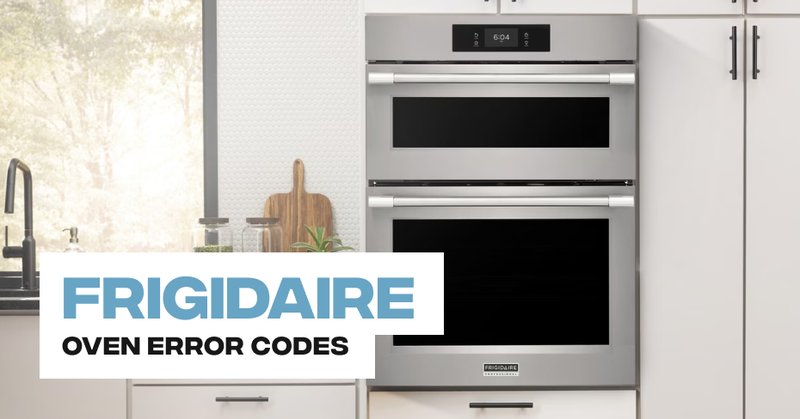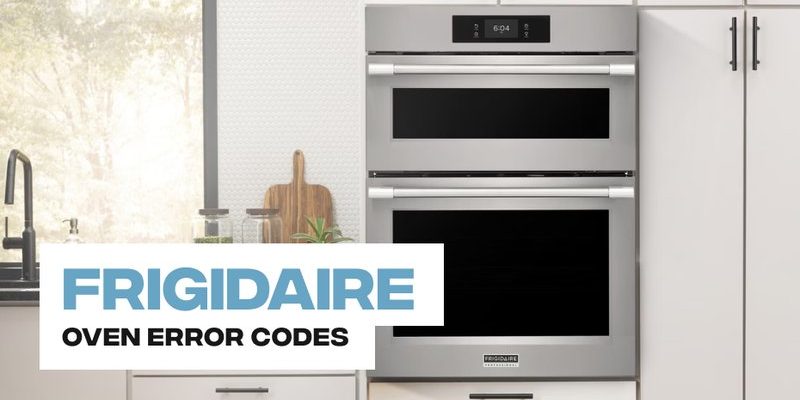
Frigidaire ovens and ranges, just like many modern appliances, come equipped with digital displays that occasionally show error codes. These codes act like little alarms, telling you something’s not quite right with the appliance. The “F1” error code, in particular, could appear due to several reasons, ranging from minor issues to more significant problems. Knowing what to do when you see that code is key to ensuring both your safety and the longevity of your appliance.
Understanding Error Code F1 on Frigidaire Appliances
When your Frigidaire oven or range displays an “F1” error code, it’s essentially flashing a warning signal. In many cases, this code is related to an issue with the electronic oven control (EOC) or its associated circuitry. Think of the EOC as the appliance’s brain, which helps manage functions like temperature control and timing. If the brain isn’t working as it should, you might run into operational hiccups.
The “F1” code could be indicating a problem with the touchpad or the control board. Sometimes, it might just be a matter of a false alarm. For instance, like how a smoke detector goes off when there’s only a little steam. In other cases, it could be a more serious fault that might require professional attention, as certain errors can affect the oven’s ability to maintain the right temperature, potentially leading to inefficient cooking or worse, safety hazards.
It’s crucial to differentiate whether the issue is a momentary glitch or something more profound. Turning off the oven and resetting it by unplugging it for five minutes can sometimes clear the error. If the code persists, it might be pointing to a hardware issue needing a deeper look. Understanding this baseline can help you decide on the next steps to ensure safe usage.
Potential Causes of the F1 Error Code
Error codes like “F1” can crop up due to several reasons, much like how your car’s check engine light can be triggered by anything from a loose gas cap to an engine misfire. For Frigidaire ovens, a loose or faulty temperature sensor could be one culprit. This sensor helps regulate the oven’s heat and, if defective, might cause the oven to heat unevenly or not at all, leading to the code popping up.
Another common issue could be a problem with the keypad itself. This is akin to your smartphone’s screen acting up when it’s dirty or wet. Over time, residue or moisture can affect the touchpad, causing it to malfunction and throw up error codes. Cleaning the keypad gently with a soft, dry cloth might resolve such instances.
Lastly, if there’s a persistent electrical problem or if the motherboard is failing, the code will likely stay until the component is repaired or replaced. These types of issues are generally best left to professionals, as tackling them without the right knowledge can lead to further damage or even void warranties.
Addressing and Fixing the Error Code
So, now that you know what might be causing the “F1” error, what can you do about it? Here’s the deal: the first step you can take is a soft reset. Similar to rebooting your computer when it gets stuck, unplugging your oven for a few minutes and then plugging it back in can sometimes clear minor errors.
If the error continues to appear, check to see if the problem lies with the keypad by ensuring it’s clean and dry. You might be surprised how often a simple cleaning fixes electronic issues. If that doesn’t do the trick, you could try recalibrating the oven’s temperature settings as a temporary workaround, though this doesn’t address the root cause of the error.
For more persistent issues, or if you’re not comfortable tinkering with the appliance, contacting a professional repair technician is a wise choice. They have the expertise to diagnose the problem accurately and ensure it’s fixed without causing further issues. It might seem like a hassle, but professional help is often the best path to ensuring both safety and proper function.
Tips to Prevent Future Errors
Encountering an error code can be daunting, but there are a few strategies to help prevent them in the future. Regular maintenance of your oven is paramount. This means keeping it clean, not just for hygiene but also to ensure that all parts work smoothly without interference from dirt or grime. Just like how you’d keep your car serviced to avoid breakdowns.
Avoid overloading the oven, which can strain the components, leading to potential errors. Think of this as trying to cram too many clothes into a washing machine and then wondering why it’s not spinning. The same principle applies to your oven and range.
Finally, consider investing in a surge protector if your area is prone to power fluctuations. Electrical spikes can wreak havoc on delicate circuitry, leading to errors and potentially damaging key components. Taking these simple precautions can save you a lot of time and stress down the line.
In conclusion, while encountering an “F1” error code on your Frigidaire oven might be inconvenient, knowing how to read the signals and take appropriate action is key. With a bit of troubleshooting and the right preventive measures, you can keep your appliance running smoothly and safely.
